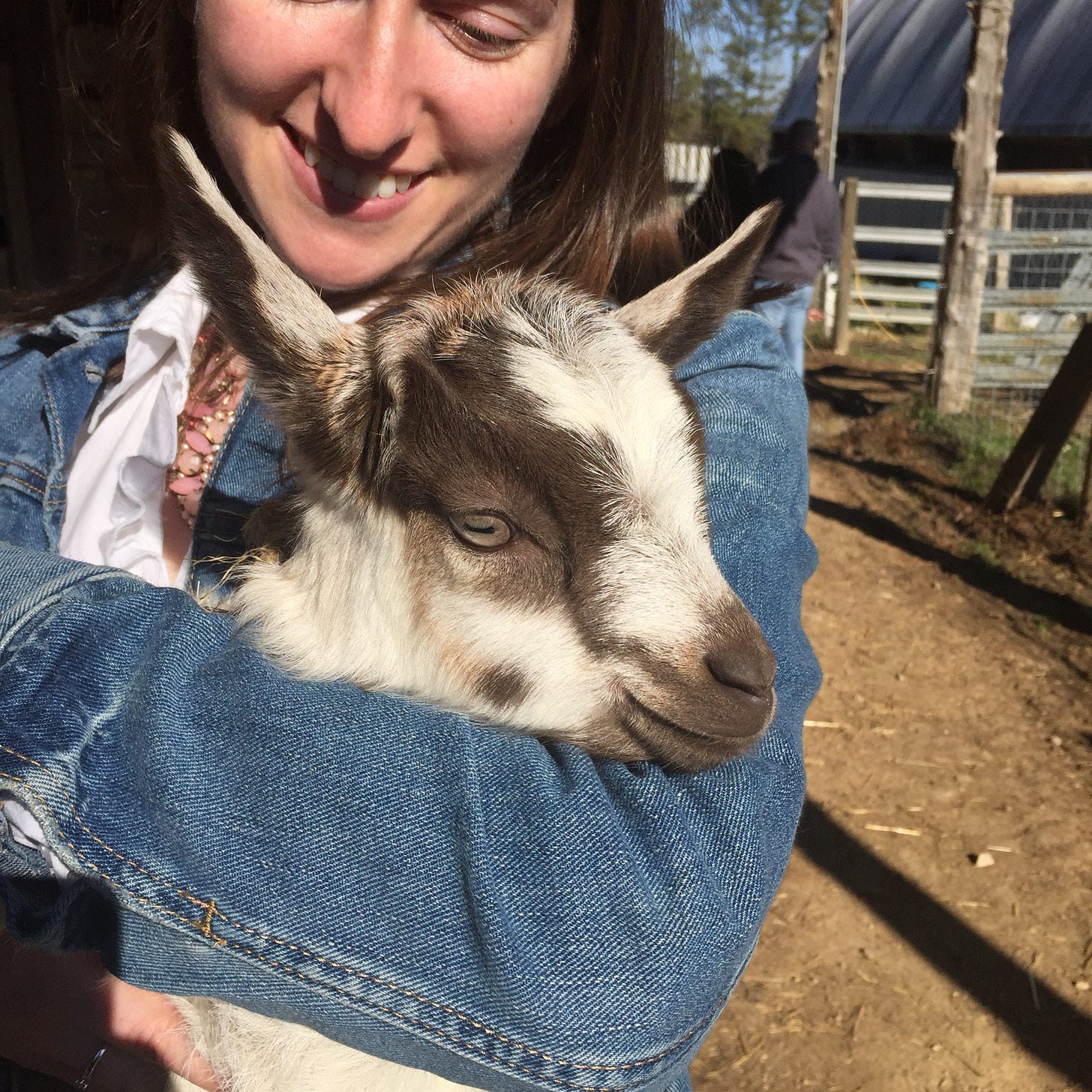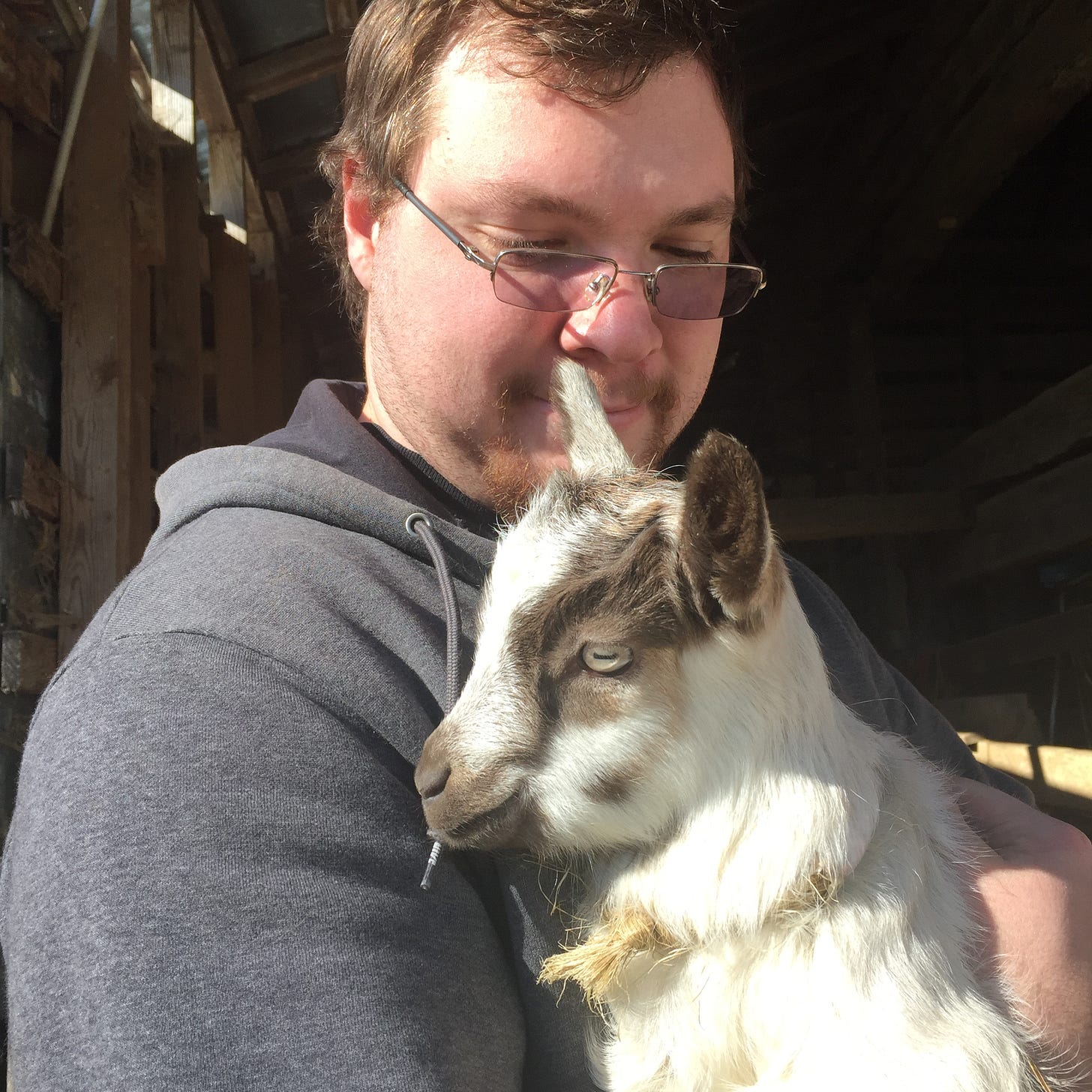I ordered our next livestock
When I research animals to add to our homestead, I prioritize them based on the purposes they serve.
Happy Thanksgiving! Grateful for you being here. I hope that you receive the time and make space for what matters to you today.
I tell this story to folks whenever they ask why I got quail or pigs, or why we don’t have goats or ducks or geese. When I was in the fifth grade I had 243 “pets.” Our house always had a dog. We also had a pond, multiple fish tanks, a “turtle garden,” salamanders, anoles, iguanas, hermit crabs, toads, and so many other critters. Before my dad got chickens, he had ordered quail eggs, and quail were my first experience hatching and raising birds. That 243 number included all of the aforementioned critters, plus a swath of praying mantis babies. I had a little praying mantis egg in a plastic terrarium and when those eggs hatched, 200 baby mantises emerged. I remember coming home from school to check the egg and seeing baby mantises everywhere—covering the terrarium, on the wall above it, and across the top of the fish tank. (We had the terrarium resting on top of the tank.) We didn’t know how tiny they would be and they were small enough to fit through the thin air slats along the crown of the terrarium.
After that experience we didn’t hatch mantis again, but we did butterflies several times. We were always surrounded by LIFE. When I wanted to get any animal, my parents had a requirement that I had to read and learn about the animal. Back in these analog days of pre-Google, that meant checking out all the books at the library, and requesting books from other libraries. I wasn’t allowed to get an iguana until I learned about them, and the same went for my cockatiels (one of which I still have today and turns 25 next year!). This information gathering in advance of animal gathering became a reflex.
Today I research animals with a different lens than I did a million years ago as a kid. If we were chatting a year ago, we would have been talking about goats. I was fairly certain goats were the next best thing to add. My beekeeping mentor has them and always tells me how much I’d like them. Other folks have told me that goats would be great to add—but why? Why would they make sense for me? Based on what I read, it would make sense to have them help remove invasive species, and I’d love to have the experience of a dairy goat some time (but not forever), but are those enough reasons? Especially since we don’t consume much dairy?
I took an online goat class last winter. That helped me have a greater appreciation for goat care and fencing, and I realized they don’t make sense for us right now. Then I considered sheep, which made a lot more sense for us, and I took an online sheep class. Sheep remain high on the list for us. Ultimately, I decided pigs were the next best thing for us. This led me to reserving two barrows in March, which are Fred and Barney, the Idaho Pasture Pigs we brought home this summer.
We’re about halfway through our time with Fred and Barney, so I’ve been leaning on that reflex of researching animals to help decide what we’ll add next. Here’s what I’m considering for our current needs:
No permanent fencing requirements
No permanent structure requirements
Seasonal or short commitment
Must contribute to soil building
Manageable on my own (The hubs helps out with the critters, when needed, but it’s not his day-to-day thing.)
Provide food for our family
Not require special predator protection
Sheep fell off the top of the list because they require a shelter and I haven’t figured out a good mobile shelter setup that I could move on my own. Sheep also require predator protection given the coyote population in our area. That would mean we would also need to add a donkey, mule, or livestock guardian dog, and I’m not ready to add multiple animals at once.
Given these considerations, I landed on meat chickens. We’ve raised layers for nearly a decade, so poultry care won’t require a learning curve. I already have mobile electric poultry netting. (I described its many uses in my recent post about how I save on the homestead). We can create a temporary, lightweight structure for them, which I can easily move on my own and re-purpose for other livestock. Meat bird (broiler) maturity ranges from 6-to-8 weeks for high-production hybrids, to 10-to-12 months for heritage breeds. I leaned on that research reflex when deciding on which broiler breed to get. We’re already planning on adding more layers to our flock next year, so I decided to use the same brooding time to brood the broilers.

For our layers, we have several different breeds and really love the salmon faverolles. They are the sweetest souls, their coloring blends in with the landscape, which protects them from predators, they’ve had no egg binding or other health issues, and lay reliably. For our forthcoming broilers, I decided to get Murray McMurray’s Big Red Broilers. They take about 3 months to mature, so not as quick as the high-production broilers, but also not a long commitment either.
All of the chicks will arrive in late January/early February. The layers will move out to join our existing flock by mid-March. The broilers will mature faster and they’ll move outside to their future mobile shelter a little earlier. They’ll remain out there until late April. I’ve never processed chickens before, so this will be a new experience for me.
The timing for our forthcoming chickens works for us on several levels:
The pigs will move on the last week of February, so that daily care will end.
We have a big trip I’m planning for May. By then all of the broilers will be processed, and the layers will be fully assimilated with the flock. We won’t need to coordinate extra animal care while we’re away.
We won’t need to manage extra animals through the stress of the summer heat and threat of hurricane season.
The broilers will be processed before the honey flow, so I can fully focus on the hives during the busiest time of the beekeeping season.
All of the extra animal care will be done before I kick off quail hatching in May.
Since raising meat birds will be a new experience for me, I’ll share more as a I learn more. As with any of our food production practices, I’m driven by nutrient density and stewardship. Cost is a periphery factor. I love having flavorful and nutritious food to cook, and it means a lot to me to have a direct connection with the ethics in producing it. However, I will share that whole chicken at the farmers’ market has cost me about $45 per bird recently. That price got my attention and fueled my interest in researching broilers. I’m not sure yet of the volume of feed the broilers will consume, but I’ll track the cost to see how it evens out.






I remember you talking about getting broilers years ago! …and I can’t get those praying mantises out of my head!